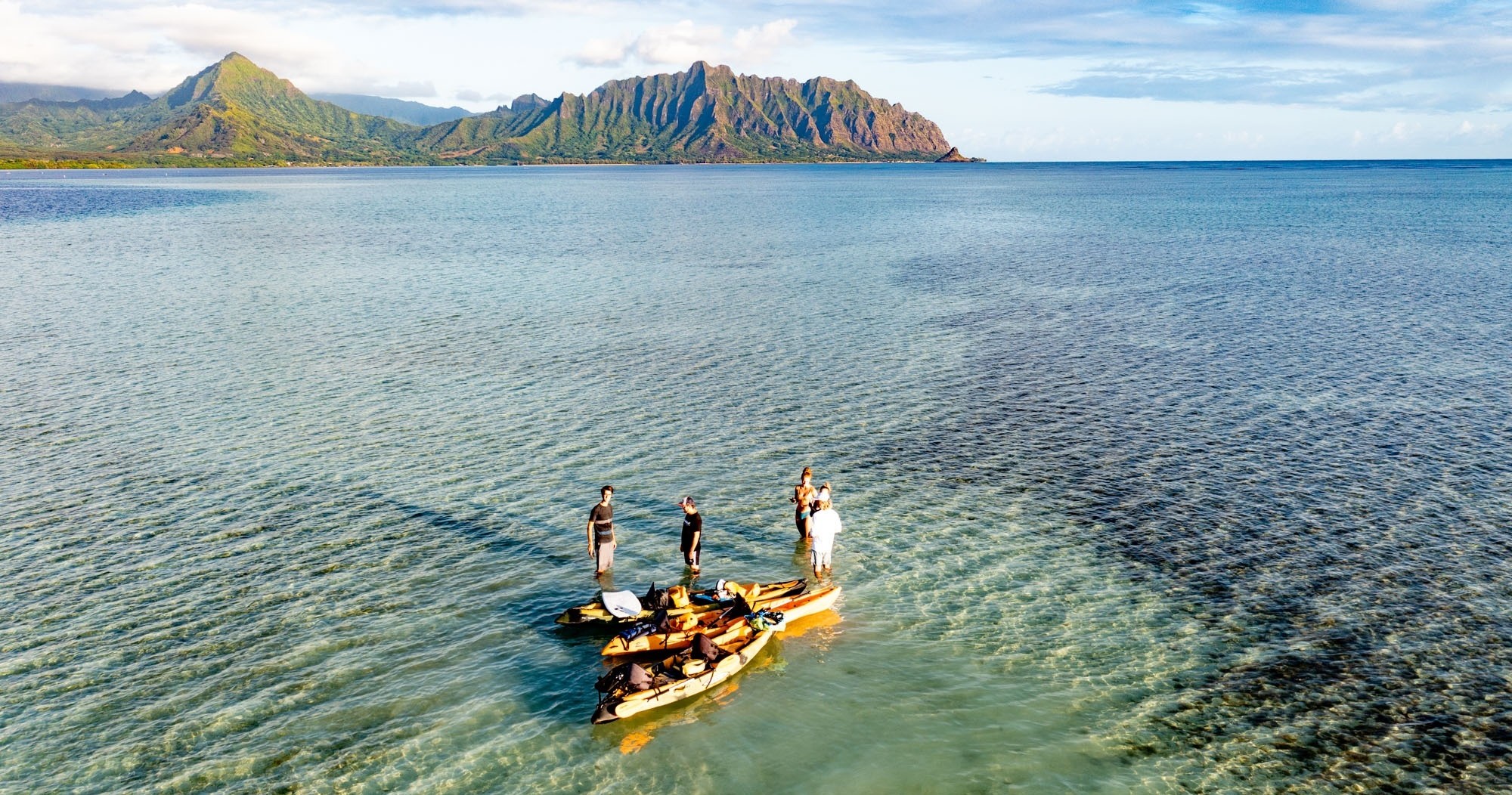Kaneohe Bay's coral islands are a visual treasure—offering vibrant undersea landscapes just beneath the water’s surface. This guide equips photographers with practical tips and viewpoint options to capture the bay’s vivid coral reefs beautifully and respectfully.
Time Your Visit Around Low Winds
Mornings typically have calmer waters creating clearer visibility for reef photography, minimizing surface disturbance and glare.
Use a Polarizing Filter
This filter reduces reflections off the water surface, enhancing underwater clarity and boosting coral colors.
Carry Waterproof Gear Protection
Saltwater spray and humidity can damage camera equipment; keeping your gear protected ensures longevity and performance.
Respect Coral Reef Guidelines
Avoid touching or standing on coral to protect this living ecosystem and ensure consistent photo opportunities for others.
Mastering Photography on Kaneohe Bay's Vibrant Coral Islands

Kaneohe Bay Sandbar Self-Guided Kayak Experience
4 Hours or All Day • Ocean Kayak
Discover the serene waters of Kaneohe Bay on a self-guided kayak adventure. Paddle at your own pace, explore hidden coral reefs, and relax on a beautiful sandbar surrounded by Hawaii's stunning scenery. This private experience offers flexibility, safety, and unforgettable views for all outdoor lovers.
Kaneohe Bay’s coral islands present a colorful challenge and opportunity for photographers seeking to capture Hawaii’s undersea brilliance without ever submerging a camera. These islands, with their coral gardens vividly alive beneath crystalline waters, invite both seasoned shooters and curious travelers into an environment fiercely itself—dynamic, light-filled, and richly textured.
To photograph Kaneohe Bay’s coral reef shelters effectively, timing and gear matter as much as the eye behind the lens. Early morning light offers calm waters and soft illumination that reveal the reef’s iridescent blues, greens, and pinks. By mid-afternoon, the sun climbs high, casting sharper shadows and flickering patterns across the coral surfaces where currents dare to twist through crevices.
Start by scouting accessible vantage points around the bay—reef overlooks at Coconut Island or the Kaneohe Sandbar provide elevated views for landscape shots, while kayaks or paddleboards offer closer, water-level perspectives. Use a polarizing filter to cut through surface glare, enhancing the clarity and saturation of coral beneath the waves. Embrace wide-angle lenses to capture expansive reef scenes, or zoom lenses to isolate surprising marine details, like a colorful reef fish darting through coral branches.
Don’t overlook the interplay of texture and motion. The bay’s currents push and pull coral polyps; photographing long exposures can capture the gentle sway of underwater life, contrasting with sharp coral details. Experiment with underwater housings if taking your camera in—snorkeling beneath these coral islands reveals a hidden world eager to be framed.
Preparation is practical: bring waterproof bags, lens cleaning supplies for salt mist, and schedule shoots during slack tides when water is at its stillest. Respect the environment by maintaining distance from fragile coral and adhering to no-touch guidelines; these ecosystems are alive and demanding of both care and admiration.
In summary, Kaneohe Bay’s coral islands offer photographers an adventure charged with living color and light patterns. The key is to engage the setting with respect and readiness—balancing creativity with technique to seize moments where vibrant coral bursts into sharp focus, bold and breathtaking.
Nearby Trips
All Adventures
Boat Charters
Water Activities
Adventures near Kaneohe
Discover the unique and memorable adventures that make Kaneohe special.
Frequently Asked Questions
When is the best time to photograph the coral reefs in Kaneohe Bay?
Early mornings between 7-9 AM provide calm waters and soft light, reducing surface ripples and glare, perfect for capturing clear images of the coral reefs.
Can I snorkel while photographing the coral reefs?
Yes, snorkeling with a waterproof camera or housing is ideal to capture close-ups of vibrant marine life, but be mindful of reef protection rules and avoid touching coral.
Are drones permitted for aerial photography over Kaneohe Bay?
Drone usage is restricted across much of Kaneohe Bay due to environmental and privacy concerns; always check local regulations before flying.
What should I do if I want to photograph wildlife around the coral islands?
Look for early morning or late afternoon sessions when fish and seabirds are most active; patience and telephoto lenses help capture shy species without disturbing them.
Are there less crowded spots for photography around Kaneohe Bay?
Yes, areas around Coconut Island’s less trafficked edges or secluded coves near the sandbar offer quieter vantage points for photographers seeking solitude.
How should I manage my equipment around saltwater to avoid damage?
Rinse all gear with fresh water after exposure to salt spray, use sealed bags when transporting, and avoid lens changes near the shore to minimize sand entry.
Recommended Gear
Polarizing Filter
Vital for reducing water glare and enhancing underwater detail and colors.
Waterproof Camera Bag
Protects your gear from salt spray and humidity around the bay.
Underwater Camera Housing
Allows underwater shooting in calm, clear waters—best used in warmer months.
Wide-Angle Lens
Crucial for capturing expansive coral reef landscapes and vibrant underwater scenes.
Local Insights
Hidden Gems
- "The rarely visited southeast shoreline of Coconut Island provides intimate reef views away from crowds."
- "The nearby Kaneohe Sandbar at low tide offers unique shallow water perspectives not often photographed."
Wildlife
- "Look for Hawaiian green sea turtles basking near coral outcrops."
- "Spot fluorescent parrotfish nibbling along coral branches during midday."
History
"Kaneohe Bay’s coral islands have been central to Native Hawaiian culture, serving both as fishing grounds and sacred places, with remnants of ancient fishponds nearby."
